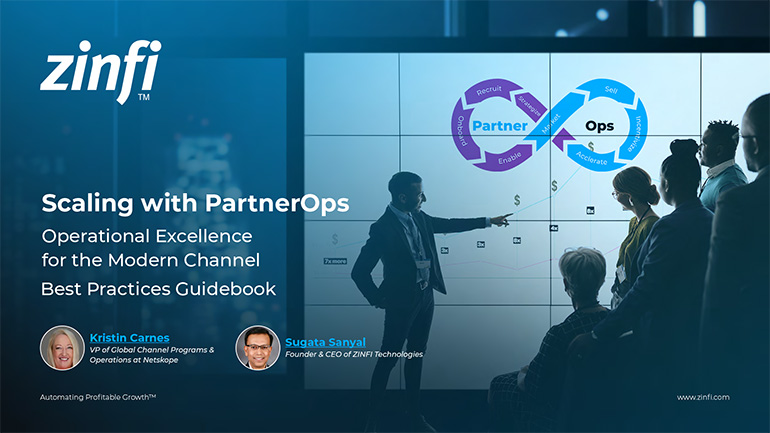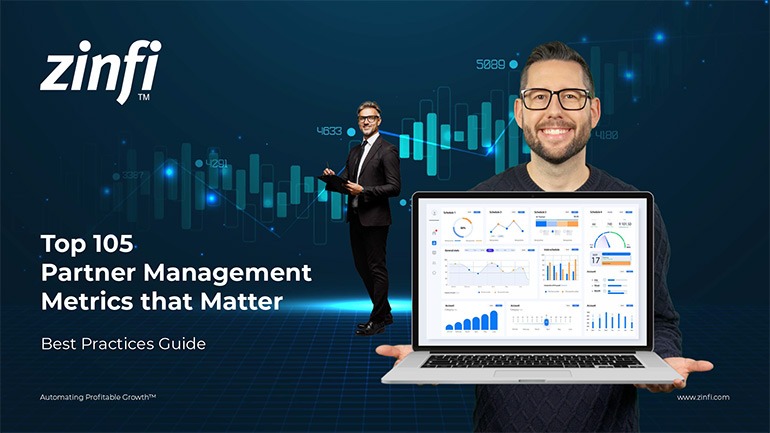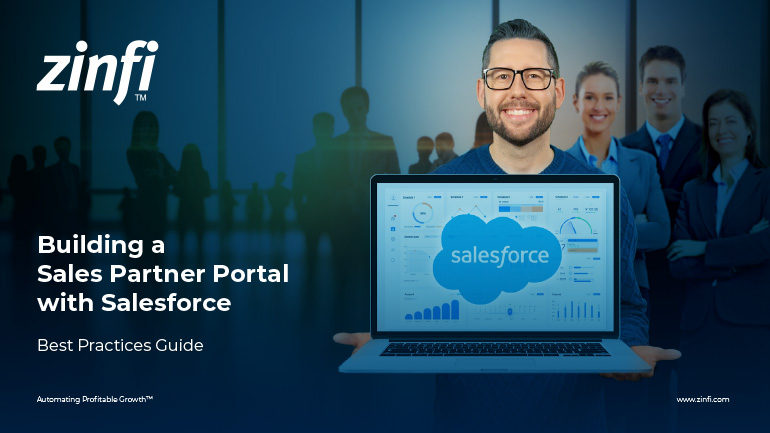Best Practices Articles

ROI-Centric Partner Marketing Models: Optimizing Spend for Qualified Pipeline Creation
Return on investment now dictates the sustainability of every marketing dollar spent. Across B2B ecosystems, partner marketing has become the engine that drives scalable, measurable, and repeatable revenue generation. Organizations no longer tolerate vague metrics or abstract promises. They expect partner marketing to deliver a qualified pipeline, accelerate deal velocity, and reduce the cost of acquisition. Every tactic must prove its value by contributing to top-line growth.
The evolution of channel ecosystems demands a disciplined marketing approach. Vendors and their partners must embrace a model integrating planning, execution, and post-campaign analysis under one performance-focused framework. Partners no longer accept campaigns that generate leads without context or content without purpose. They want programs that build pipelines efficiently, quickly move leads through the funnel, and convert interest into committed conversations.
Partner marketing holds immense potential. It enables companies to extend reach, deepen vertical expertise, and localize their message at scale. Yet only ROI-focused programs unlock that potential. Effective partner marketing requires shared accountability, transparent metrics, real-time reporting, and a firm grasp of the cost-benefit equation.
This article provides a comprehensive blueprint for optimizing ROI across partner marketing programs. It details how to align investment with outcomes, structure campaigns for efficiency, reduce waste, support partners with execution resources, and scale results. With the right systems, talent, and mindset, partner marketing can become the highest-returning growth strategy in any channel-focused business.
1. Building ROI Discipline into Partner Marketing Frameworks
Every high-performing partner marketing program begins with a clear performance model. Vendors and partners must define success with precision. Success no longer means impressions, clicks, or content downloads. It means booked appointments, qualified sales opportunities, and closed deals.
Vendors must first model conversion at each funnel stage to build a scalable ROI framework. For example, if a campaign produces 100 marketing-qualified leads (MQLs), how many should become sales-qualified leads (SQLs)? How many of those SQLs will convert into held appointments? Of those, how many will result in revenue-generating deals?
This reverse-engineered logic allows for accurate budget allocation. A $40,000 SaaS solution with a 20% close rate implies that each appointment holds an expected value of $8,000. Partner marketing campaigns must generate leads at a cost significantly lower than that to produce net-positive ROI.
Shared planning ensures alignment. Vendors must collaborate with partners to set campaign goals and lead expectations based on historical data, product positioning, and market maturity. They must define timelines, cadence strategies, and capacity thresholds so partners can effectively prepare their internal teams to engage and close leads.
ROI discipline also mandates consistent tracking. Vendors must build systems that capture every touchpoint—from email opens and ad clicks to call notes and deal stages. Without complete data, partners cannot improve. Partner marketing must operate as a feedback-driven system, not a sequence of disconnected tactics.
Partner marketing becomes a shared responsibility when both sides commit to the same ROI benchmarks. Performance improves because accountability drives better decisions, faster course corrections, and stronger engagement.
2. Structuring Scalable Investments in Partner Marketing Execution
Scalability requires structure. Partner marketing will not scale through ad hoc tactics or one-off incentives. Vendors must provide structured campaign packages that adapt to partner maturity, industry focus, and financial constraints.
The first rule of scalable investment is matching budget to impact. A $5,000 campaign cannot aim to generate an enterprise-level pipeline. Instead, it should focus on single-offer outreach, such as webinar promotion or whitepaper engagement. Higher-tier investments—$15,000 and up—can support multi-touch sequences with telemarketing, paid social, landing pages, and retargeting ads.
Partners need clear guidance. They must know what each investment level provides, what resources they need to contribute, and how the program will measure ROI. Partner marketing programs that offer tiered funding menus or a-la-carte service options give partners the power to choose the path that best fits their goals.
Cost-sharing enhances scalability. Vendors who offer co-investment models—matching partner spending or providing MDF based on performance—build stronger engagement. These structures show commitment and allow smaller partners to participate in campaigns they would otherwise avoid.
Outsourced services increase reach. Many partners lack internal marketing staff. Vendor-provided telemarketing, copywriting, ad design, and campaign management allow them to execute without hiring. These services preserve consistency and elevate quality, particularly when aligned with ROI objectives.
Partner marketing grows when programs remove ambiguity. Investments scale only when the structure supports consistency, predictability, and a clear link between input and result. With the proper scaffolding, partner marketing becomes both accessible and powerful.
3. Lowering Lead Costs Through Integrated Campaign Strategy
Partner marketing only drives profit when it controls cost-per-lead while maintaining lead quality. Lowering acquisition costs requires integrated campaigns that combine digital and telemarketing into one orchestrated system.
Digital outreach builds awareness and captures signals. Telemarketing drives action and qualification. When vendors combine these two functions under one partner marketing initiative, conversion rates rise, and lead costs fall. For example, an email sequence that educates the buyer, followed by a contextual phone call, achieves higher engagement than either channel alone.
Timing matters. Partner marketing systems must ensure that outreach follows buyer behavior. If a lead clicks on an ad or downloads a guide, the follow-up call must happen within 24 to 48 hours. Delay reduces relevance, weakens response, and inflates the cost of conversion.
Automation improves efficiency. Campaign platforms should trigger nurture emails, assign call tasks, and update lead status automatically based on engagement. Reps waste less time hunting for information and spend more time selling. Partner marketing becomes a guided engine rather than a manual effort.
Integrated reporting provides insight. Vendors must monitor the interplay between channels to determine which combinations produce the best results. Does a social ad plus a cold call outperform email plus inbound form fill? Partner marketing analytics must answer this question to reduce spend and optimize channel mix.
Every dollar matters. Partner marketing success depends on using fewer resources to create more opportunities. Integrated strategy achieves this through relevance, timing, and precision.
4. Supporting Partner Sales Teams to Improve Conversion
Lead generation without sales enablement produces churn. Partners who receive leads but cannot convert them lose confidence, disengage from campaigns, and stop participating. Partner marketing programs must prioritize conversion support as much as they prioritize outreach.
The first point of impact is messaging. Reps need talk tracks, pitch decks, case studies, and objection handlers that align with the campaign narrative. Consistency across marketing and sales builds trust and improves closure rates. Partners must receive content packages that map directly to the offers prospects encountered during outreach.
Training reinforces results. Vendors should host virtual workshops, role-playing sessions, and deal coaching calls that sharpen partner readiness. Reps must learn to qualify efficiently, identify pain points, and position value immediately. Partner marketing campaigns that include pre-campaign training outperform those that skip this step.
BDR support boosts performance. Vendors who offer shared calling resources ensure faster follow-up and higher booking rates. These reps bridge marketing and partner sales, delivering insights, verifying intent, and scheduling appointments that stick.
Performance visibility drives focus. Reps who see how many leads converted, how many meetings closed, and how their numbers compare with others stay motivated. Leaderboards, gamification, and rewards tied to performance further align sales behavior with campaign objectives.
Partner marketing programs must empower the reps closest to the buyer. Without enablement, even the best campaign generates little impact. But with strong support, partner reps turn the pipeline into profit.
5. Using Real-Time Analytics to Optimize and Expand ROI
Measurement closes the loop. Partner marketing programs that succeed long-term build continuous feedback into every execution stage. Dashboards, reporting tools, and post-campaign reviews enable faster iteration, better decision-making, and higher ROI.
Real-time analytics create transparency. Vendors must provide partners access to engagement data, call logs, booking rates, and pipeline progression. These insights help partners prioritize leads, troubleshoot gaps, and replicate winning behaviors.
Attribution modeling improves planning. Vendors learn what content, channels, and cadences matter most when partner marketing systems connect every sale back to the touchpoints that influenced it. This reduces guesswork and directs future investment toward high-yield tactics.
Feedback must drive change. Vendors and partners should meet quarterly to evaluate campaign performance. These sessions allow teams to revisit assumptions, test new approaches, and adapt messaging based on evolving buyer behavior.
Scalable programs rely on replicability. Analytics reveal which campaign partners can duplicate across industries or regions. A playbook built on data allows new partners to adopt best practices quickly, reducing ramp time and increasing consistency.
Partner marketing must function as a learning system. When insights flow freely, performance accelerates across the ecosystem. When data drives decisions, ROI improves organically.
Conclusion
Partner marketing has reached a new stage of maturity. No longer a tactical exercise, it now serves as a strategic lever for growth that requires structure, investment, accountability, and continuous improvement. Vendors who design programs without ROI at the core will struggle to maintain momentum or justify spend.
Success stems from clarity. Vendors and partners must plan together, execute with discipline, and measure with transparency. Campaigns must align with sales strategy, engage the right buyers at the right time, and produce outcomes that everyone agrees matter. Partner marketing requires the same rigor as direct sales—and delivers the same value when executed correctly.
ROI optimization transforms partner marketing from a support function into a competitive differentiator. When vendors commit to shared success, support partners with real resources, and manage programs with metrics, they unlock the full value of their channel ecosystem.
Smarter investment fuels scalable growth. Partner marketing drives that growth when teams build it on data, execute it effectively, and measure its impact.
Best Practices Guidebook
 Scaling with PartnerOps Best Pratices
Scaling with PartnerOps Best PraticesDownload Guide
 Leading with Partner Programs Best Pratices
Leading with Partner Programs Best PraticesDownload Guide
 The Partner-First Blueprint: Scaling Trust, Intelligence, and Ecosystem Growth
The Partner-First Blueprint: Scaling Trust, Intelligence, and Ecosystem GrowthDownload Guide
 Unlock Scalable Growth with The Partner Marketing Growth Blueprint
Unlock Scalable Growth with The Partner Marketing Growth BlueprintDownload Guide
 From TikTok to LinkedIn: Social Selling Across the Generational Divide
From TikTok to LinkedIn: Social Selling Across the Generational DivideDownload Guide
 Scaling Partner Ecosystems: From Enablement to Intelligence
Scaling Partner Ecosystems: From Enablement to IntelligenceDownload Guide
 The Ultimate Guide to Partner Marketing Success Best Practices
The Ultimate Guide to Partner Marketing Success Best PracticesDownload Guide
 How to Start and Scale Partner Ecosystems Best Practices
How to Start and Scale Partner Ecosystems Best PracticesDownload Guide
 The Evolution of PartnerOps: Past, Present & Future Best Practices
The Evolution of PartnerOps: Past, Present & Future Best PracticesDownload Guide
 Mastering Channel Sales: Strategies, Best Practices, and Growth Tactics for 2025
Mastering Channel Sales: Strategies, Best Practices, and Growth Tactics for 2025Download Guide
 Winning with Partner Advisory Councils: Best Practices for Partner Engagement & Growth
Winning with Partner Advisory Councils: Best Practices for Partner Engagement & GrowthDownload Guide
 The Future of Partner Ecosystems Best Practices
The Future of Partner Ecosystems Best PracticesDownload Guide
 The AI Revolution: How Technology and Talent are Shaping the Future
The AI Revolution: How Technology and Talent are Shaping the FutureDownload Guide
 Top 105 Partner Management Metrics that Matter Best Practices
Top 105 Partner Management Metrics that Matter Best PracticesDownload Guide
 Mastering PRM Integration Best Practices
Mastering PRM Integration Best PracticesDownload Guide
 Building a Sales Partner Portal with Salesforce Best Practices
Building a Sales Partner Portal with Salesforce Best PracticesDownload Guide
 Building and Managing Partner Ecosystems Best Practices
Building and Managing Partner Ecosystems Best PracticesDownload Guide
 Mastering Co-Marketing and Co-Selling Best Practices
Mastering Co-Marketing and Co-Selling Best PracticesDownload Guide







